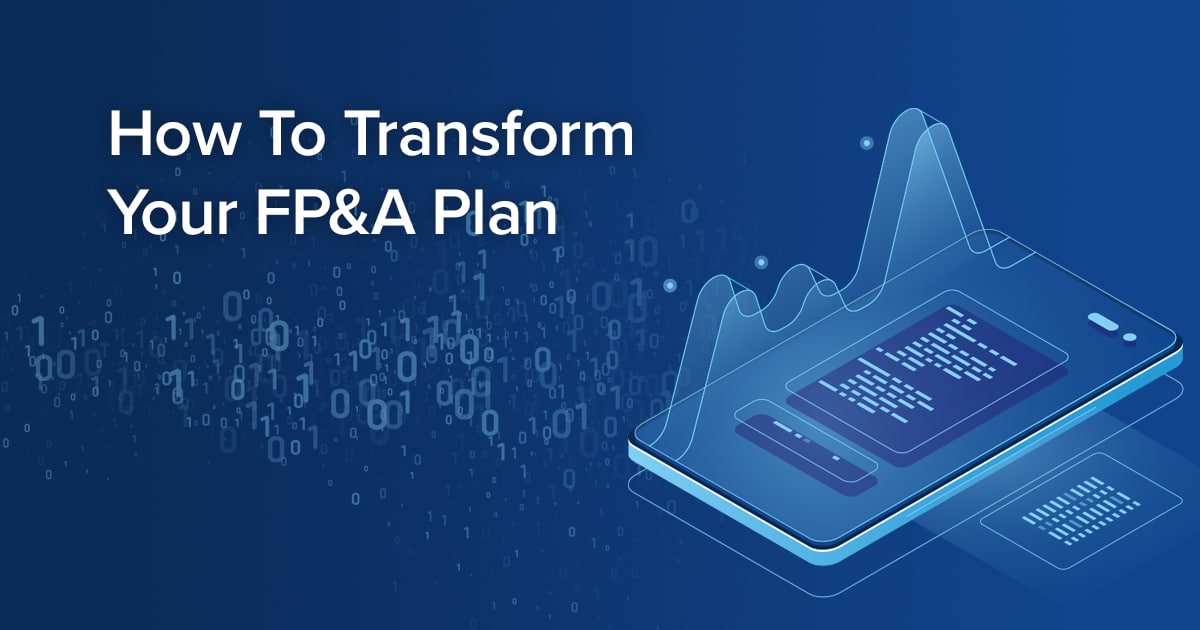
How to Transform Your FP&A Plan
Finance professionals generally tend to be risk averse. Transforming your FP&A plan will not be an easy task, but it must be addressed as it is a top priority for the CFO to better support delivering on the expectations from the CEO.
In today’s world where technology changes are rampant and society’s expectations of new ideas and stimulation is at a rate not seen before. Everyone wants to be at the forefront of the next new idea. Be the one who possesses the innovative and entrepreneurial spirit. How does Finance keep up?
That is exactly what we’re been addressing in this “Future of FP&A” blog series where I’m so pleased to have Tania Trifunoski back to help us write up a transformation plan now that we’ve looked at the details of the mindset, process, people, and technology.
You might remember that it was Tania who introduced us to the four mindset attributes of the future FP&A professional being: curiosity, courage, crystal ball and clarity. These are also the attributes that’ll drive our transformation plan.
What does the transformation plan look like?
Drawing from the guidance, inspiration, and actions from the posts in this series so far, here are some key takeaways to get you motivated to embark on this mindset change:
- Take the reins in our own career
- Increase efficiency everywhere
- Technology will guide our roles
- Retrain, create new habits
- Drive the right strategic choices in the company – not support, but drive.
A mindset-led transformation will require enormous reflection on the way you do things, and a robust discussion and idea generation of the way you want to do things differently. In other words, your Current State is “A”, your desired Future State is “B”, and how you get there is your journey, a mindset-led transformation.
Done well, an FP&A mindset transformation is led by people,it touches and changes all processes, and embraces technology.Let’s begin with the simple steps of what it is going to take to kick off the mindset transformation.
Step 1. Explore and capture what mindset you have to start with. To do this, begin with yourself as a leader and reflect on how you have been working as an FP&A professional. Ask yourself how you have been applying the 4C’s – curiosity, courage, crystal ball, and clarity to people, process and technology. Remember to think about your finance team, your finance leader peers both cross functionally and externally.
Step 2: Reflect on comments you made in your “current state” analysis, and also your “future state” goals.
Step 3: Write a list of 12 things you will do differently to achieve the desired results in your “future state”. If 12 things seem too overwhelming, you can also start small by picking just one or two things you’ll do differently. Achieving early success is critical to long-term success.
Step 4: A mindset change is not black and white. It is an individual journey first, and then comes a team transformation. Now that you have increased your self-awareness and have an approach for changing your mindset, prepare and run similar sessions for your finance team and finance peers.
Step 5: There are two more elements that you need for a successful transition plan and execution. These are to continuously challenge yourself and others, and to care. You cannot change a mindset if you do not care, and as quoted by Fred DeVito, “if it doesn’t challenge you, it won’t change you.” So lastly, hold yourself and your finance team accountable for “doing what you said” to embed the new mindset.
How can I test if it works?
A sample questionnaire is provided below to help you challenge your mindset on an ongoing basis and hold yourself accountable:
Curiosity:
- Did we meet with our stakeholders as promised?
- Did we ask questions that kept us informed about the business?
- Did we ask questions that gave an insight we did not expect?
- Did we listen?
- Did we build/repair trust?
Courage:
- Did we challenge our stakeholders?
- Did we present a new idea?
- Did we make a recommendation?
- Did we negotiate and compromise on deliverables?
- Did we share information we have previously kept to ourselves?
- Did we present bad news?
Crystal Ball:
- Are we predicting the impact of the forward-looking ideas from our stakeholders?
- Have we created financial models that we can use as a tool to share information and ideas with stakeholders?
- Are we attending external events to stay current with emerging technology, other organisational implementations, etc.
- Are we targeting 80/20, 80% forward looking, 20% past and present reporting?
- Are we comfortable that some of our modeling predictions will have errors and some will fail?
Clarity:
- Are we seeking feedback from our stakeholders?
- Are we telling the story of the FP&A transformation journey?
- Have we separated Business as Usual tasks from new implementations?
- Do we have business wide sponsorship/endorsement of new models/technology?
- Do we have a plan to manage critics and any project failures?
The mind is a powerful thing. When the mind leads, the business and everything else will follow. If you don’t get the mindset right, all other efforts to transform will fail. Now it’s time for you to get started on transforming you organization’s FP&A.
If you don’t feel ready yet, what’s missing for you to get going? We realize that it will not be easy but we’ve tried to make it simple and laid out some clear steps to follow. If you’re already in the middle of the transformation we’d love to hear from you and write about your case for others to be inspired.


